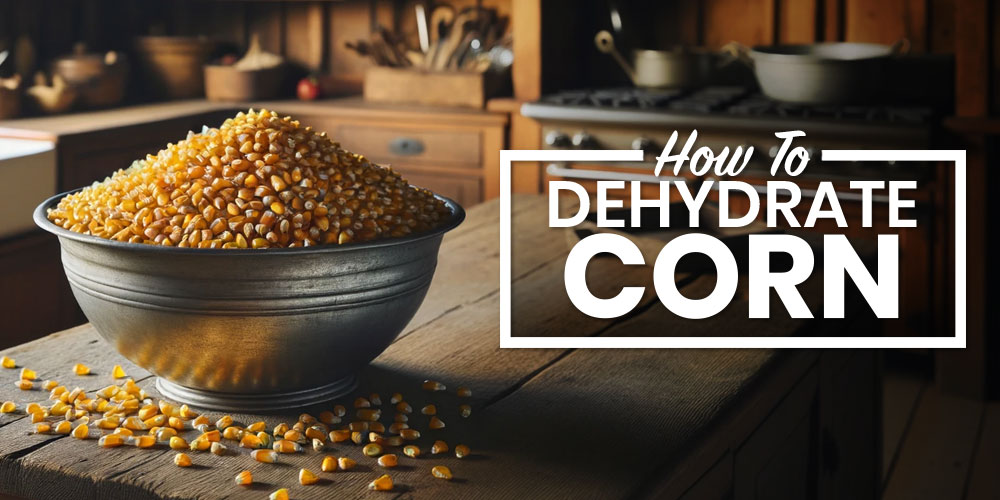
NAVIGATION
I cook from scratch almost every day, so it’s important to me to keep a wide variety of ingredients on hand, even though I live full-time in a tiny house. I always have dried corn and other vegetables in my pantry, so I rarely have to make an unnecessary trip to the grocery store when I’m craving a hardy corn chowder or sweet corn muffins.
I prefer dried corn over buying it canned from the grocery store because I think the flavor is better. Plus, it’s really simple and convenient to take the corn I’ve grown and dry it. It’s a staple in my pantry, especially during the winter months when fresh corn isn’t available. I’m sharing everything I’ve learned about my preferred method of food preservation in this guide

Hi, I’m Ryan
Sweet corn is one of the many summer vegetables I look forward to each year. It’s hard to beat fresh corn on the cob. Throughout my homesteading journey, I’ve discovered dehydrating corn is an excellent way for me to enjoy corn throughout the year.

Can You Dehydrate Corn?

Yes, and I’ve learned that the process of dehydrating corn can be traced back to central Mexico at least a few thousand years. People have been drying corn for more than a millennium! Corn continues to be a hardy, versatile, and tasty vegetable that adds substance to any meal. And as it turns out, it’s easy to dehydrate, too.
What Varieties Of Corn Can Be Dehydrated?
Sweet corn is what I recommend for dehydrating because it is sweet and juicy, and it re-hydrates well. Varieties like Silver Queen, Butter, Sugar, and Jubilee are easy to grow and dehydrate. This is the process I’ll be sharing with you below.
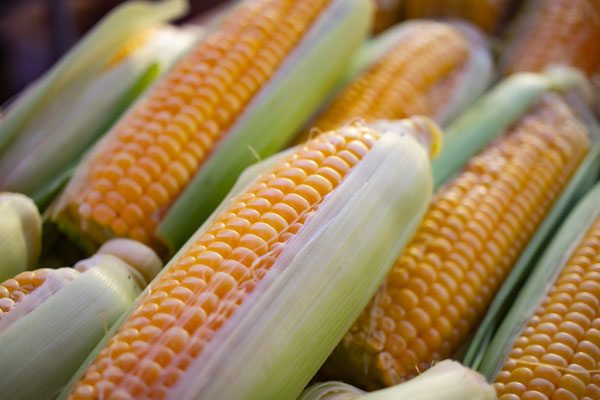 One of the first things I learned about dehydrating corn is that starting with the right type is crucial. For example, dent corn is grown commercially for feeding livestock and making ethanol and household products. Dehydrated, dent corn is ground to make cornmeal, corn chips, corn tortillas, corn starch, and grits.
One of the first things I learned about dehydrating corn is that starting with the right type is crucial. For example, dent corn is grown commercially for feeding livestock and making ethanol and household products. Dehydrated, dent corn is ground to make cornmeal, corn chips, corn tortillas, corn starch, and grits.
Other corn varieties worth mentioning are flint corn and popcorn. There are several eye-catching varieties of flint corn, like Glass Gem and Heirloom, so it is primarily used as decoration. Popcorn, technically a type of flint corn, is cultivated for a tight, hard kernel that pops in high heat. Growing your own popcorn can be a challenging yet fun homesteading project. Neither of these varieties has to be dehydrated. Both will dry naturally in the field or garden.
What Parts Of Corn Can Be Dehydrated?
Most commonly, people opt to dry the kernels, which involves cutting the corn off the cob and drying the loose kernels. But if you are crunched for time, it’s fine to dehydrate the entire corn cob too.
When I have fresh corn, I dehydrate some of the husks as well for tamales and to wrap food that I’m grilling to keep it from burning. I just put the husks in the dehydrator in a single layer for about 6 hours at 150° F and then store them in a sealed plastic bag.
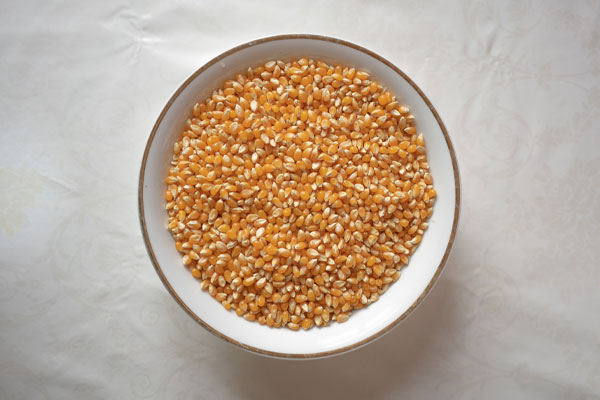
Do I Need To Shuck Corn To Dehydrate It?
Yeah, you’ll need to shuck corn to dehydrate it. If you want to dry husks like I do, they need to be removed and dehydrated separately.
Do I Need To Blanch Corn To Dehydrate It?
I always blanch corn before dehydrating it because blanching stops the corn from ripening. This prevents the corn from getting too sweet or mushy when I rehydrate it, and the blanched corn rehydrates better when I am ready to use it.
How To Dehydrate Corn

Learning how to dry corn is similar to the process for other dehydrated vegetables. The main differences for corn are the preparation and the amount of time it will take to dehydrate. Since corn kernels are so small and have higher moisture content than a lot of other vegetables, I keep a closer eye on it when it’s in the dehydrator.
Equipment You’ll Need To Dehydrate Corn

Dehydrating is one of the simplest, most foolproof food preservation methods, so don’t go making it more complicated than it has to be! I got started dehydrating with only basic equipment, and I promise you can do it, too, as long as you have the following items.
Equipment To Dehydrate Corn
- Dehydrator
- Mesh dehydrator sheets
- Small, sharp knife
- Jars and lids
*If your dehydrator came with fruit leather inserts, you can use those instead of purchasing mesh sheets.
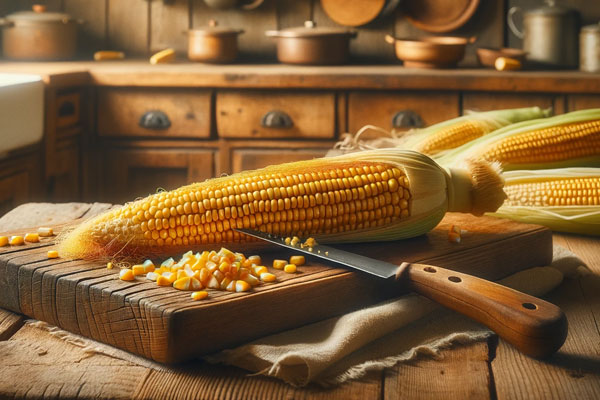
Steps To Dehydrating Corn

As I mentioned earlier, corn can be dehydrated on the cob to save time, but here, I’ll share how I make dehydrated corn cut off the cob since it’s easier to store and has more uses once it’s reconstituted.
Dehydrating Corn Step-By-Step
- Shuck And SilkPull all the shucks off, reserving some of the soft inner shucks if you plan to dehydrate those. Remove silks from the corn with a small brush.
- Blanch, Cool, And DryBring a pot of water to a boil. Add corn and start a timer for 4–5 minutes once the water returns to a boil. There should be enough water to completely cover the corn. Remove the corn and submerge it in ice water, then lay it on a paper towel or clean cloth to drain.
- Cut Off KernelsUsing a sharp knife, slice kernels off close to the cob. Break up any chunks of kernels before adding them to the dehydrator.
- Place Kernels In DehydratorPlace mesh dehydrator sheets on the dehydrator trays to prevent corn from falling through as it dries, the same as you would for scallions. Then spread the corn in a single, even layer on each sheet.
- Run The DehydratorSet the temp to dehydrate corn at 120° F for 12 hours. Check on it every 2 hours until the 6-hour mark, then check it every hour until done since corn dehydrates faster as it approaches optimal dryness.
How Do You Tell When Your Corn Is Done Dehydrating?
Corn is done dehydrating when it shrinks to about half its size and becomes shriveled all over. Dried corn has a crispy texture, so I usually just pop one in my mouth to check for a nice crunch.
Can You Use An Oven Instead Of A Dehydrator For Corn?
It takes about twice the time to dehydrate corn in a traditional oven versus a dehydrator, so you’re looking at about 24 hours in total. Drying time in a convection oven is comparable to a dehydrator — about 12 hours — but you will still need to stir it every few hours.
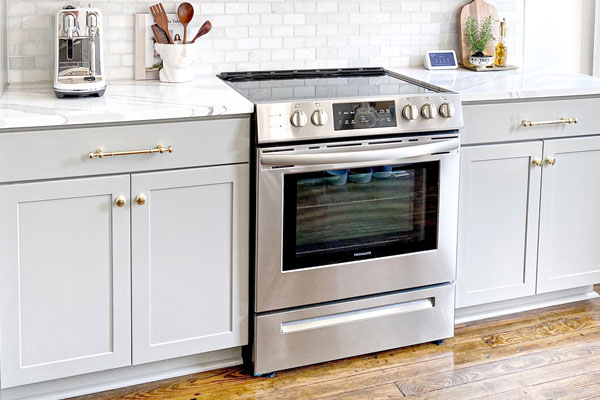
How To Store Dehydrated Corn

You can add an oxygen absorber packet, which you can purchase in bulk online. One in each jar can prevent dried corn from turning brown. Browning doesn’t affect the freshness of the corn, but it does make it look less appetizing.
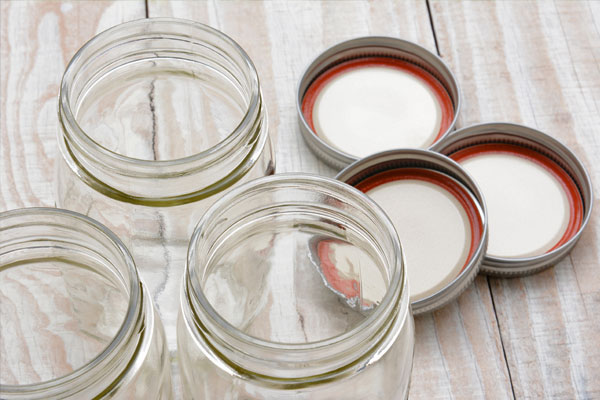
How Long Will Dehydrated Corn Last
Sweet corn has a shelf life of four to five years, as long as the texture remains crispy and no mold is visible. Environmental factors like temperature, moisture, and sunlight dictate how long dried corn will remain edible.
How To Use Dehydrated Corn In Your Cooking

Occasionally, I will use dried corn on salads, in cold pasta or as a quick snack without rehydrating it. Dried corn has a crispy texture, not hard like a popcorn kernel. I have friends who’ve made their own cornmeal from dried corn by blending in a food processor. This ground corn can be added to bread or soup for added flavor and body, or you can use it for baking.
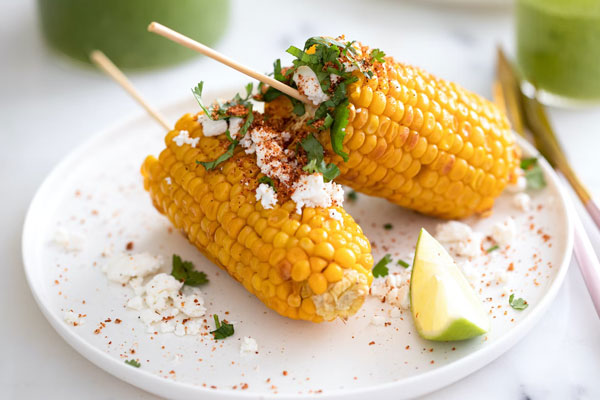
Fresh To Dehydrated Corn Conversion
Corn kernels will reduce in size by a little more than half when dehydrated.
I’ve found that one large ear of corn yields roughly ¾ cup of kernels, so it would take eight ears to yield 6 cups of fresh kernels. Those 6 cups will dehydrate down to 2½ or 3 cups of dried corn, which will easily fit in a pint jar.
How To Re-Hydrate Dehydrated Corn
To rehydrate dried corn, soak it in hot water for 30 minutes to an hour before using. If you think ahead, you can soak it overnight in a bowl of water in the fridge instead.
 Another option is to add dehydrated corn directly to soups and stews, along with about a cup of extra water or broth, and the corn will rehydrate as the dish cooks.
Another option is to add dehydrated corn directly to soups and stews, along with about a cup of extra water or broth, and the corn will rehydrate as the dish cooks.
Dehydrating corn has afforded me the convenience of having one of my favorite summertime vegetables on hand year-round.
I’ve experimented with using dried corn several different ways, and I honestly haven’t found a way to prepare it that’s not equal to the taste and texture of fresh corn.
Your Turn!
- How can you substitute dried corn in your favorite corn dishes?
- Do you think dried corn is a good alternative to pressure canning?

Leave a Reply